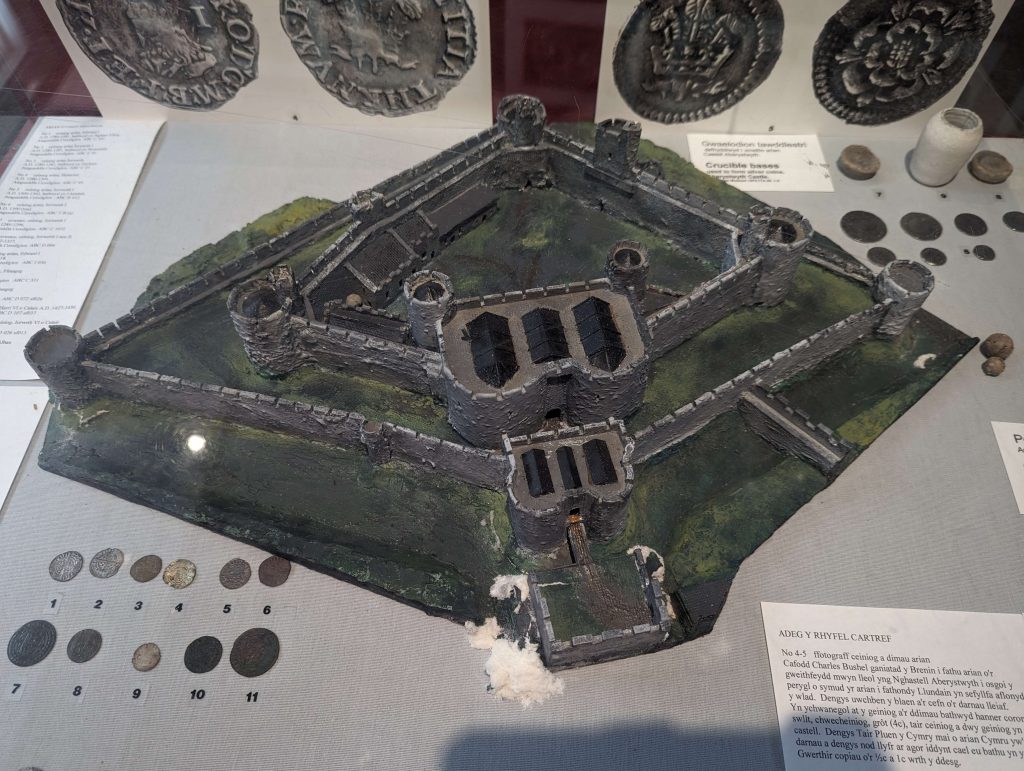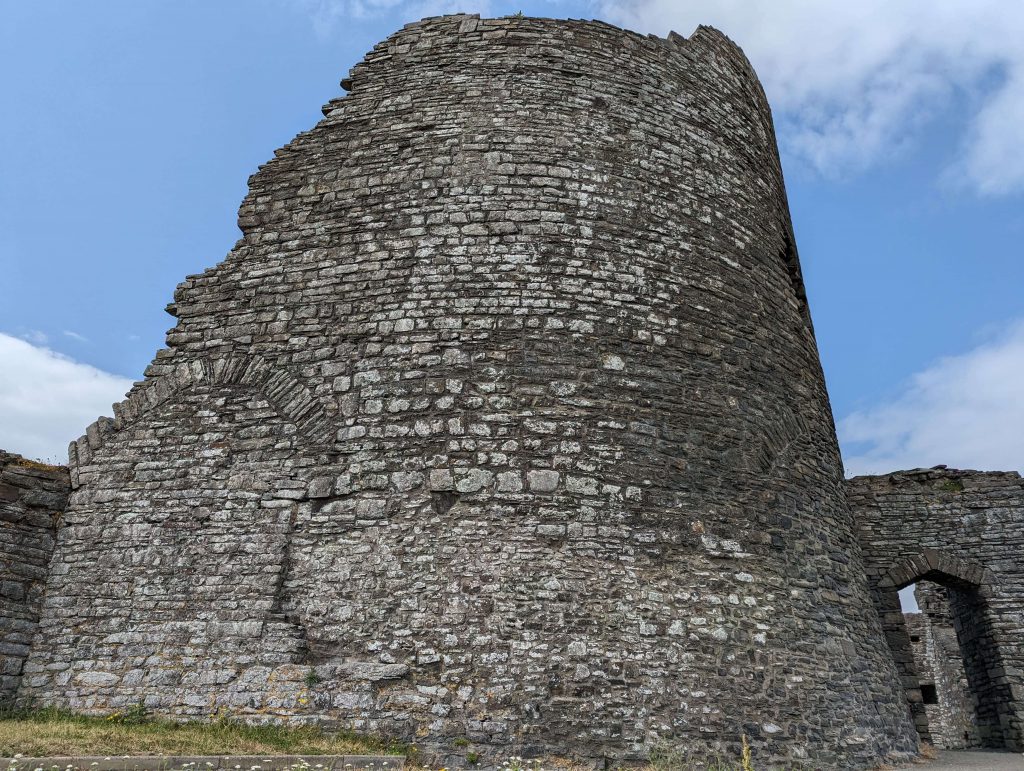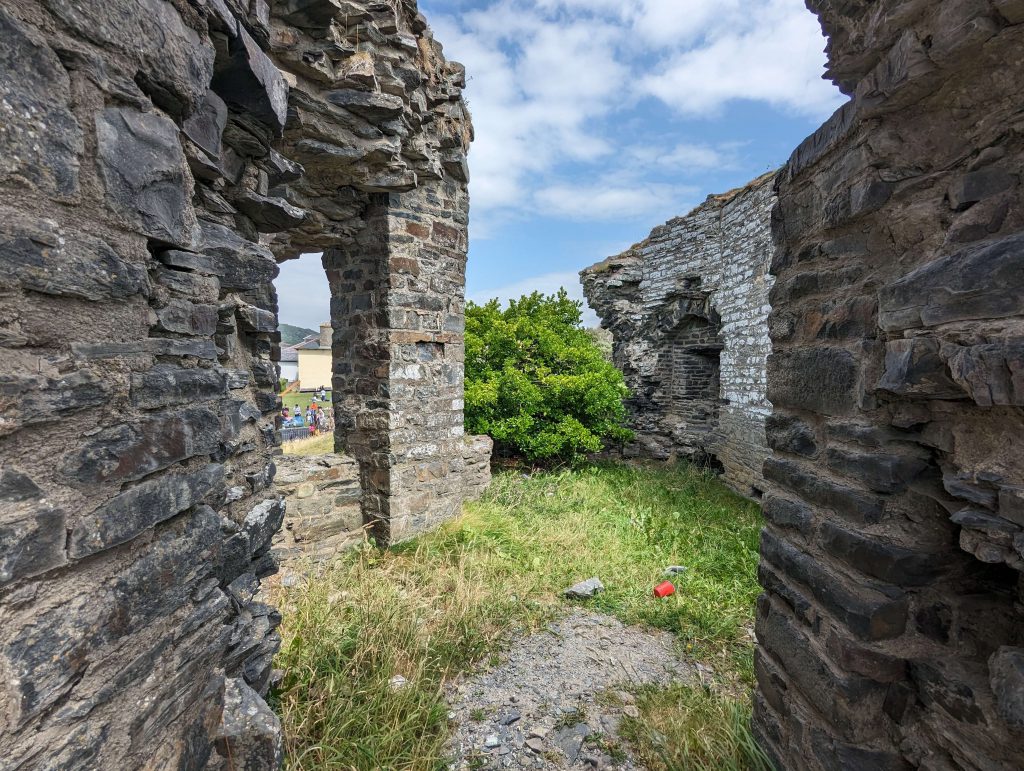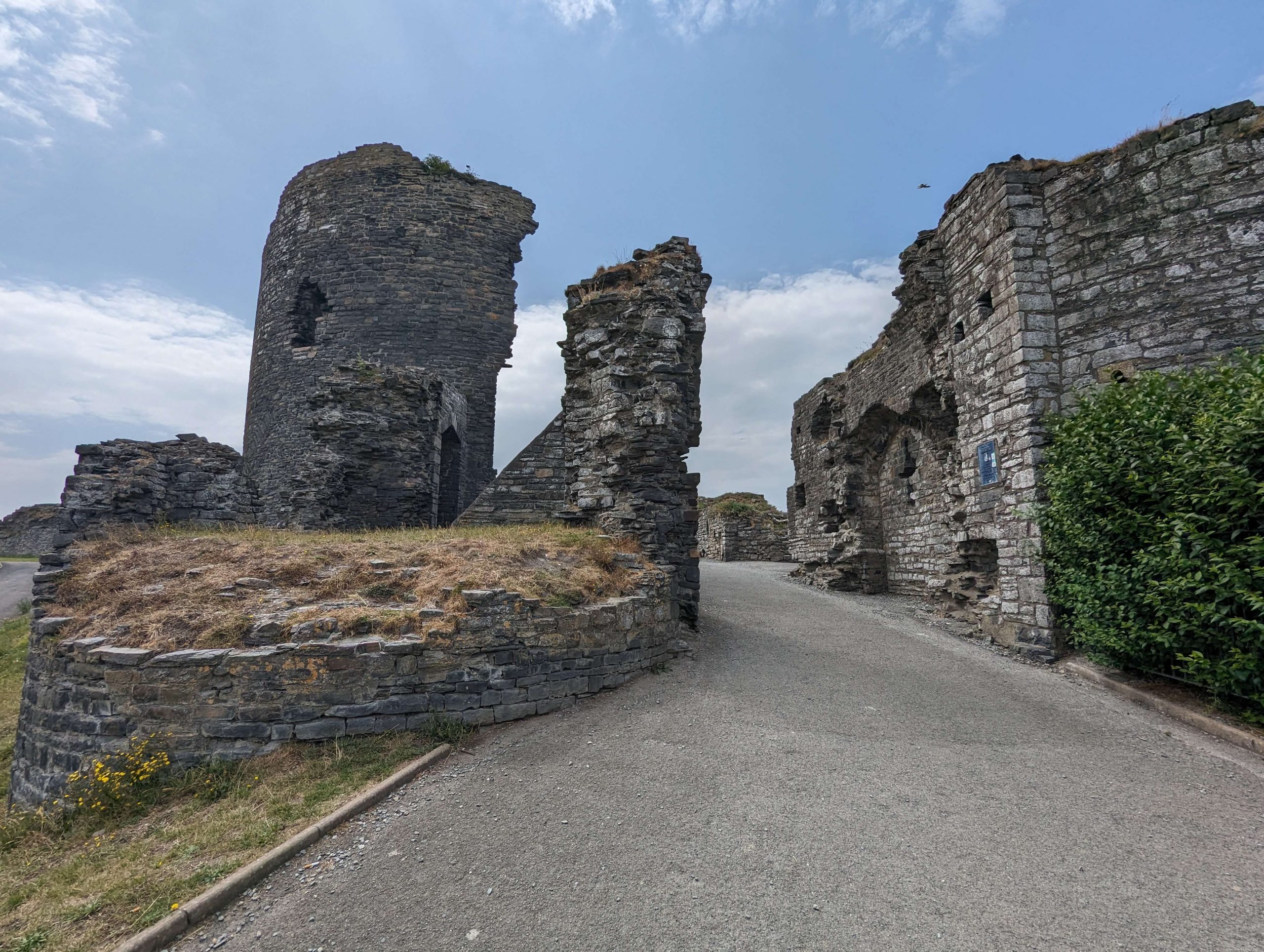Aberystwyth is a Welsh seaside town in Ceredigion, Mid Wales. Amongst the tourist attractions and just a few yards away from the sea lies the ruins of one of Edward I’s greatest fortresses, Aberystwyth Castle. The castle saw much conflict between the English and Welsh and is the site of the first known use of cannons in Britain.
| Built | 13th Century |
| Type | Concentric Castle |
| Condition | Ruinous |
| Ownership | Aberystwyth Town Council |
| Access | Public – free |
| Postcode | SY23 2AU |
Click here to explore Aberystwyth Castle with us and discover its history
The first castle built at Aberystwyth was a timber ringwork constructed by the Marcher Lord Gilbert de Clare a mile south of the current site in around 1110. The castle changed hands repeatedly as the Normans and Welsh constantly fought for control. In 1221 Llewelyn the Great captured the castle and it is believed that he demolished it and constructed a new one in its place.
In 1277, Edward I ordered the construction of several new castles as part of his campaign against the Welsh, these included Flint Castle, Rhuddlan Castle, Builth Wells and Aberystwyth Castle. In 1282 the Welsh rebelled and captured and greatly damaged the incomplete castle. In 1283, Edward recaptured his castle and construction resumed under the King’s master mason, James of St George. The castle was finally completed in 1289 but at a colossal sum for the time of £4300.
Aberystwyth Castle was designed in a diamond shaped concentric layout. It contained an inner ward surrounded by a curtain wall and four massive round towers positioned at each corner. The castle had a D-shaped gatehouse keep and defensive features included arrow loops, battlements and a moat.


In 1294 Aberystwyth Castle proved its mightiness when it was besieged and withstood attacks from the Welsh during the revolt of Madog ap Llywelyn (1294-95). By 1307 the castle and town were flourishing but just a few decades later, during the time the Black Prince controlled the castle in 1343, it was in a poor state of repair. The close proximity to the turbulent sea was causing decay, the main gateway, drawbridges and outer bailey were falling down.
During the rebellion of Owain Glyndwr in the early 15th century, Glyndwr took advantage of Aberystwyth Castle’s poor state and seized it. By 1408, the castle was back in the hands of the English after a successful siege led by Prince Henry (future King Henry V). The siege involved the first known use of cannons in Britain, although this did not go entirely to plan as historians recorded that the 4.5-ton cannon, likely the one called ‘The Messenger’, blew up killing its gun crew in the process.
Following Glyndwr’s failed rebellion a new era of peace between the English and Welsh ensued and Aberystwyth Castle lost its military importance and was left to fall into disrepair.


In 1637, King Chales I, designated the castle as a royal mint, in which silver shillings were produced. When the English Civil War began, The mint’s operator was loyal to the King and raised a regiment of Royalist soldiers. Parliamentarians besieged the castle in 1645, the Royalist troops withstood for months but eventually surrendered in 1646.
Following the Royalist defeat in the English Civil War, the Parliamentarian leader, Oliver Cromwell ordered the castle to be slighted (destroyed) to prevent it from ever being used again. The castle was left in ruins and unfortunately much of the stone was taken away by locals for building.
Aberystwyth Castle is now a Grade I listed monument that is looked after by Aberystwyth Town Council and is free for the public to explore.

